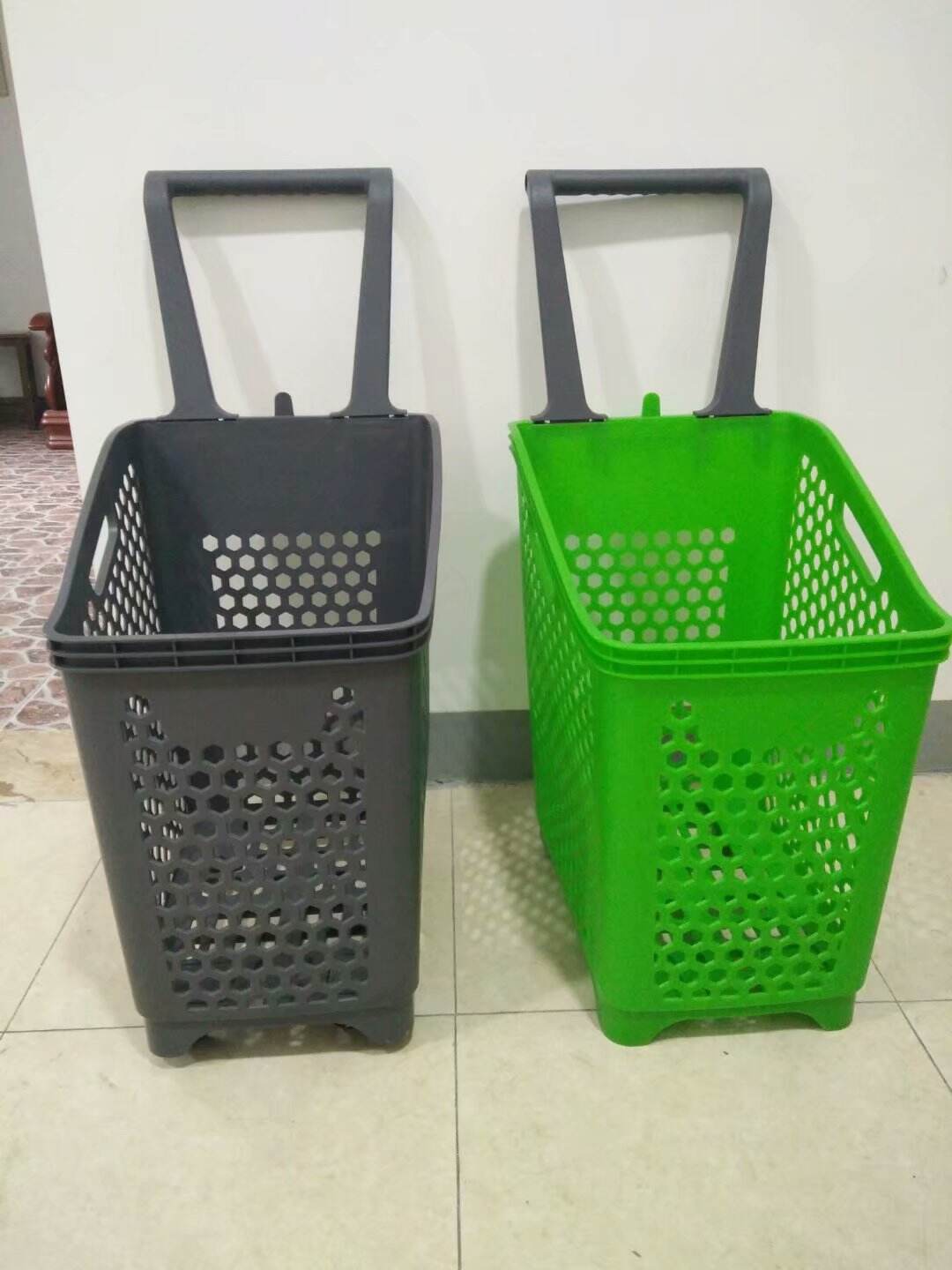Optimizing Customer Experience Through Strategic Basket Selection
The humble shopping basket plays a vital role in shaping the customer experience and influencing purchasing behavior in retail environments. Store basket size decisions impact everything from customer satisfaction to average transaction value, making it a crucial consideration for any retail business. Understanding how to select the optimal basket sizes can transform the shopping experience while maximizing sales potential.
Modern retailers are discovering that basket selection goes far beyond simple functionality. The right store basket size can encourage additional purchases, enhance customer comfort, and contribute to brand perception. This comprehensive guide explores the various factors to consider when choosing shopping baskets and how they influence your store's success.
Understanding Basket Size Psychology
The Impact of Size on Purchase Behavior
Research has shown that store basket size directly influences customer purchasing patterns. When shoppers carry larger baskets, they tend to fill them with more items, often exceeding their initial shopping intentions. This psychological effect occurs because the empty space in a basket can create a subtle pressure to fill it, leading to increased impulse purchases and larger transaction values.
Conversely, baskets that are too large may intimidate customers who intended to purchase only a few items. Finding the right balance is essential for different shopping scenarios and customer segments.
Customer Comfort and Convenience
The physical comfort of carrying a shopping basket significantly affects the overall shopping experience. Store basket size must account for the average shopping duration, typical product weights, and customer demographics. Elderly shoppers or those with limited mobility may prefer smaller, lighter baskets, while families doing weekly shopping might appreciate larger options.
Ergonomic considerations such as handle design and weight distribution become increasingly important as basket size increases. The goal is to provide comfort without sacrificing capacity.

Store Layout and Basket Size Correlation
Traffic Flow Optimization
Store basket size selection should align with your floor plan and aisle widths. Larger baskets require more space for customers to maneuver, potentially creating congestion in narrow aisles. Consider how different basket sizes affect traffic flow during peak shopping hours and ensure your layout can accommodate your chosen basket dimensions.
Strategic placement of basket stations throughout the store can help manage traffic flow and encourage basket usage at key decision points.
Department-Specific Considerations
Different store departments may benefit from varying store basket sizes. Fresh produce sections might require smaller, more delicate baskets to prevent damage, while bulk goods areas could benefit from larger, more sturdy options. Some retailers successfully implement a multi-size approach, offering different basket options for different shopping needs.
Consider the weight and volume of typical purchases in each department when determining optimal basket placement and size distribution.
Material Selection and Durability
Long-term Cost Analysis
The relationship between store basket size and material choice affects both initial investment and long-term durability. Larger baskets typically require stronger materials to maintain structural integrity, especially when fully loaded. Evaluate materials based on their weight-bearing capacity, resistance to wear, and cost-effectiveness over time.
Consider how different materials perform under various conditions, including exposure to weather elements if baskets are occasionally used outdoors.
Maintenance and Replacement Cycles
Larger baskets may experience more stress and wear, potentially requiring more frequent replacement. Factor in cleaning requirements, storage space needs, and replacement costs when selecting basket sizes. Implementing a regular maintenance schedule can help extend basket lifespan and maintain their appearance.
Track usage patterns and wear rates to optimize your replacement strategy and budget allocation.
Environmental Impact Considerations
Sustainable Materials and Sizing
Modern retailers must consider the environmental impact of their store basket size choices. Larger baskets require more raw materials and may have a bigger carbon footprint in production and transportation. Evaluate eco-friendly material options and consider how basket size affects your store's overall sustainability goals.
Look for opportunities to incorporate recycled materials or implement basket recycling programs at the end of their lifecycle.
Storage and Transportation Efficiency
The store basket size affects storage efficiency and transportation costs. Larger baskets occupy more space in storage and delivery vehicles, potentially increasing operational costs. Consider nestable or stackable designs that maximize space efficiency while maintaining the desired capacity.
Evaluate how different basket sizes impact your storage facilities and delivery schedules.
Future Trends in Basket Design
Technology Integration
Modern store basket size considerations are evolving to include technology integration. Smart baskets with built-in scanners, weight sensors, or RFID tracking are emerging trends that may influence size requirements. Consider how future technologies might affect your basket size decisions and leave room for adaptation.
Stay informed about innovations in basket design and their potential impact on customer experience and operational efficiency.
Customization Options
The trend toward personalized shopping experiences extends to store basket size options. Some retailers are exploring customizable baskets or modular designs that can adapt to different shopping needs. Consider how flexible basket solutions might benefit your store's diverse customer base.
Evaluate the potential for branded or specialized basket options that enhance your store's unique value proposition.
Frequently Asked Questions
How do I determine the optimal basket size mix for my store?
Analyze your average transaction size, typical product dimensions, and customer shopping patterns. Consider conducting customer surveys and testing different size combinations to find the most effective mix for your specific store layout and customer base.
Should I offer different basket sizes throughout my store?
Offering multiple store basket size options can better serve diverse shopping needs. Consider placing smaller baskets near quick-purchase areas and larger ones in sections where customers typically buy more items.
What are the key maintenance considerations for different basket sizes?
Larger baskets typically require more frequent cleaning and durability checks. Establish a regular maintenance schedule, inspect for wear and damage, and ensure proper storage to maximize basket lifespan regardless of size.

